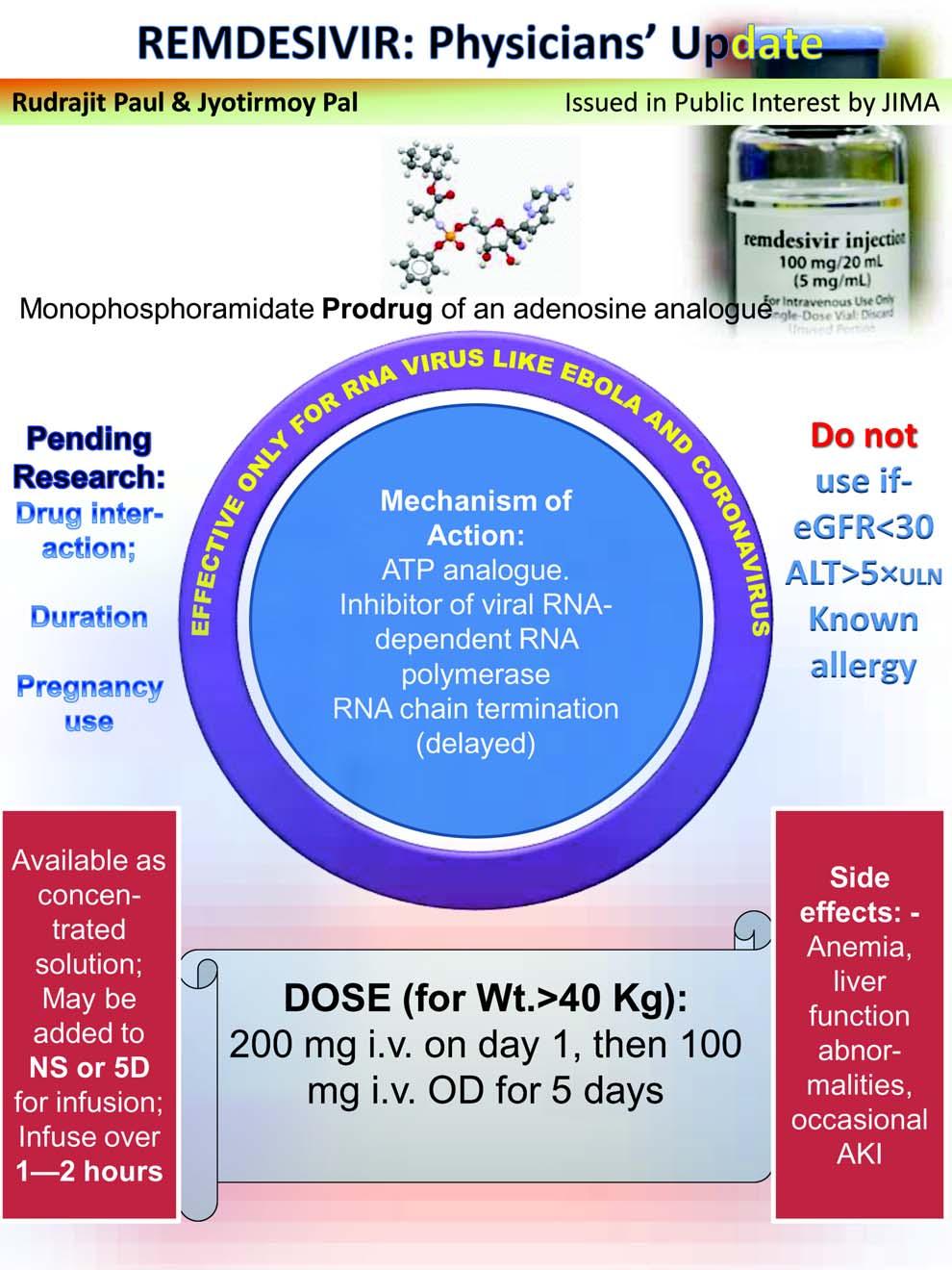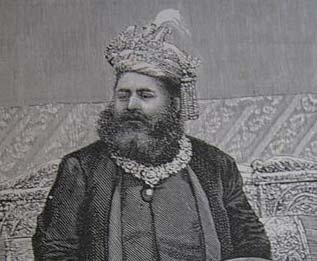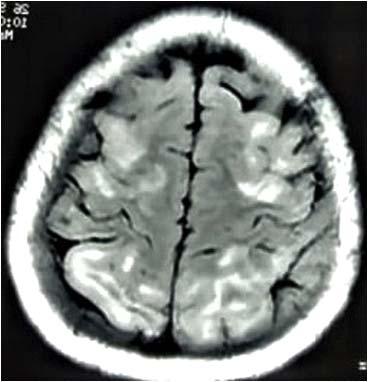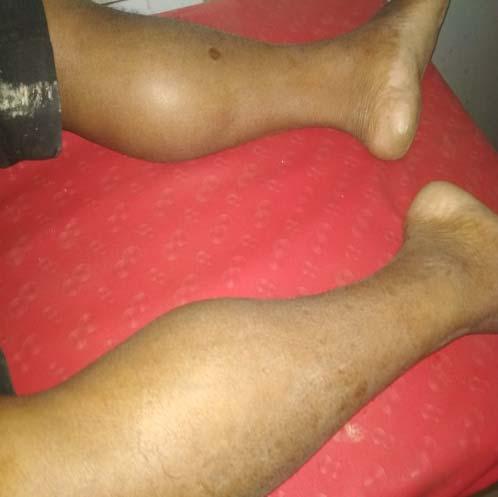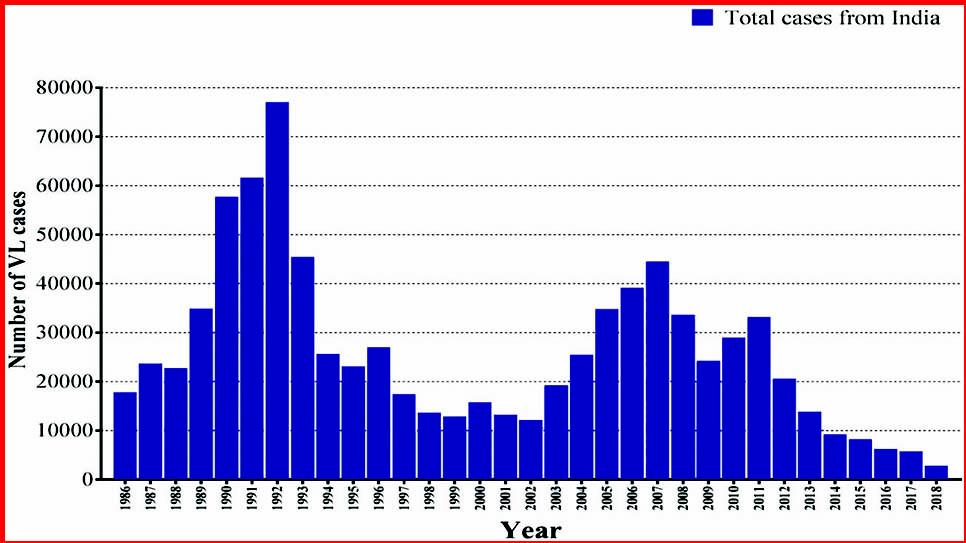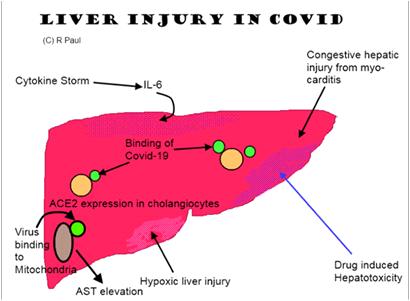
21 minute read
Original Articles
JOURNAL OF THE INDIAN MEDICAL ASSOCIATION, VOL 118, NO 06, JUNE 2020
Original Article Frequency and Pattern of Primary Headache Disorders at a Tertiary Health Facility in Dhaka, Bangladesh
Advertisement
Aminur Rahman 1 , Zahed Ali 2 , Manabendra Bhattacharjee 3 , Ranajit Sen Chowdhury 4 , Subash Kanti Dey 5 , Firoz Ahmed Quraishi 6 , Uttam Kumar Saha 7
Background : Primary headaches are under diagnosed and undertreated, with a significant impact on personal life, social activities and work.
Aim : To determine the frequency and pattern of primary headaches at a tertiary centre in Dhaka, Bangladesh.
Methods : This study was a hospital based cross-sectional descriptive study and conducted at outpatient department (OPD) of neurology in Sir Salimullah Medical College & Mitford Hospital (MH) for duration of one year. A total of 1825 patients were attended to the OPD, of which 551 were diagnosed as primary headache by neurologists were enrolled in this study. Types of primary headache were diagnosed by residents and neurologists according to the criteria of the International Headache Society (2013).
Results : The participants comprised 122 males were 22.1% and 429 females 77.9%. The mean age was 34.78±7.34 years. The overall headache was 30.19% with female predominance (p=0.947). The most common pattern of headache distribution of the study population are migraine (64.4%), then tension-type headache (TTH) (23.4%), chronic daily headache (CDH) (7.6%) and cluster headache (0.6%). Female patients (84.4%) are more suffer in migraine than male (15.6%). In case of TTH female patients (66.7%) are more suffer than male (59.1%). In case of CDH male (60.1%) are more suffering than female (39.9%). In case of cluster male patients (66.7%) are more suffer than Female (33.7%) (p<0.001). The migraine, CDH, and cluster headache are common in age group 30-39 yrs whereas TTH is common in age group 40-49 years (p<0.001). The mean age of onset of migraine was 34.24±7.09 years.TTH was 36.20±7.58 years, CDH was 36.59±8.63 years and cluster headache was 33.91±7.48 years.
Conclusions : The primary headache was common in female among working population,
predominantly migraine and tension-type headache. [J Indian Med Assoc 2020; 118(6): 20-5]
Key words : Primary headache, Migraine, Tension-type headache, Chronic Daily Headache, Cluster headache.
Headaches are the most prevalent neurological disorders and among the most frequent symptoms seen in daily practice 1 . 50% of the general population
Department of Neurology, Sir Salimullah Medical College, Dhaka 1100, Bangladesh 1 MBBS, FCPS (Medicine), MD(Neurology), MACP(USA), MAAN(USA), FINR(Switzerland), Assistant Professor and Corresponding Author 2 MBBS, FCPS (Medicine), MD (Neurology), Professor Neurology, Mymensingh Medical College, Mymensingh 2200 4 MBBS, FCPS (Medicine), Associate Professor, Department of Medicine, Sir Salimullah Medical College, Dhaka 1100 5 MBBS, MD (Neurology), Associate Professor, Department of Neurology, Bangabandhu Sheikh Mujib Medical University, Dhaka 1000 6 MBBS, FCPS (Medicine), MD (Neurology), Professor, Department of Neurology, Anwar Khan Modern Medical College, Dhaka 1205 7 MBBS, MCPD(Medicine), MD(Neurology), Professor, Department of Neurology, National Institute of Neurosciences & Hospital, Dhaka
Received on : 23/04/2020 Accepted on : 10/06/2020 Editor's Comment :
Primary headaches which are underdiagnosed and
undertreated cause significant work inefficiency, quality of life, and lost workdays.
3 MBBS, MD(Neurology), Associate Professor, Department of
The primary headache was common in female than
man among working population in between 30-39 years.
The most common pattern of primary headache
distribution is migraine, then tension-type headache.
have headache during any given year, and more than 90% report a lifetime history of headache 2 . It is estimated that 95% of men and 99% of women will have at least one episode throughout their life, provided that about 40% have it quite regularly 3 .
Primary headache disorders constitute the vast majority of headache disorders, with migraine and tension type headache (TTH) being the most prevalent. Primary headaches cause significant disability with reduced efficiency, quality of life, and lost workdays 4-6 . The global prevalence among adults
20
JOURNAL OF THE INDIAN MEDICAL ASSOCIATION, VOL 118, NO 06, JUNE 2020
is approximately 10% of migraine, 40% for tensiontype headache (TTH) and 3% for chronic daily headache 2 .Worldwide; the current global prevalence of primary headache is 47%; migraine headache, 10%; tension-type headache, 38%; and chronic daily headache, 3% 5 . The lifetime prevalence rates are higher in men,93% for headache of any kind, 8% for migraine, and 69% for tension-type headache. In women, life time prevalence is 99% for headache of any kind, 25% for migraine, and 88% for tension-type headache 7 .
Migraine prevalence during lifespan is also genderdependent 8 . Migraine occurs most commonly between the ages of 25 and 55 years and is 3 times more common in females 5,9 . Despite the fact that it causes significant disability, migraine remains under diagnosed and undertreated. Although typically not as severe as migraine, tension-type headache is far more common, with lifetime prevalence in the general population of up to 80%. There is often a degree of associated disability, and this, combined with the high frequency, produces significant socioeconomic impact 5 .
Trigeminal autonomic cephalgias are rare compared with migraine and tension-type headache. The most common trigeminal autonomic cephalgia is cluster headache which is a relatively rare but extremely painful type of headache, usually strictly one- sided, attacks in cyclical pattern and bouts 10 , with a population prevalence of 0.1% and a male/female ratio of 3.5-7:1 5,9 . Cluster headache is a relatively rare but extremely painful type of headache, usually strictly one- sided, attacks in cyclical pattern and bouts 10 .
Chronic Daily Headache (CDH) is a descriptive term and not a diagnosis per se. It is commonly defined as headaches occurring on 15 or more days in a month for at least three months and affects around 4% of the general population 11 . CDH is widely reported in the literature, yet is not an official diagnosis in the International Classification of Headache Disorders. Chronic daily headaches of long duration include chronic migraine, chronic tension-type headache, hemicrania continua, and new daily persistent headache 9 . The headache may be disabling not only due to its intensity, but also due to the frequency of attacks, which can be almost daily. This syndrome is known as chronic daily headache (CDH), and its prevalence in the overall population is approximately 5%, while in tertiary care centers it ranges from 30 to 90% of the cases 12,13 . We aimed to determine the frequency and pattern of primary headaches at a tertiary centre in Dhaka, Bangladesh, using the operational diagnostic criteria of the International 21 Headache Society (IHS) 14 .
MATERIAL AND METHODS
This study was a hospital based cross-sectional descriptive study and conducted at outpatient department (OPD) of neurology in Sir Salimullah Medical College & Mitford Hospital (MH) during August 2018 to July 2019 for duration of one year. Patients attend to OPD and out of 1825 patients 551 patients were diagnosed as primary headache were enrolled in this study. The inclusion criterion was age 19 and above and patient attending to OPD of the hospital, whilst the exclusion criterion was refusal to participate in the study.
Their informed written consent was taken in a consent form before collecting data. The headache survey was performed by means of an interview based on a detailed pretested structured assessment questionnaire. The interviews were conducted under the supervision of the neurologists. The headache assessment questionnaire contained demographic data included a description of the current features of headache as well as its characteristics. Details of the research were communicated to the consenting participants at the beginning of the exercise. The participants were given the questionnaires to fill out and recorded in the cases for review the following day.
Diagnostic Criteria :
Headache was diagnosed according to the criteria of the International Classification of Headache Disorders (ICHD-3: Beta Version - 2013) 14 .
Migraine was diagnosed in subjects with recurrent, moderate to severe unilateral throbbing headache associated with nausea or vomiting or visual disturbances. The subjects with migraine were not subclassified. Tension-type headache was diagnosed when subjects suffered from bilateral or vertex tightness or pressure-like feeling in the absence of gastrointestinal or visual discomfort.
Details of the diagnostic criteria according to ICHD for migraine and tension-type headaches, cluster headache, hemicrania continua and new daily persistent headache are shown in Appendix.
Proper permission was taken from the concerned departments and local ethical committee.
Exploratory data analysis were carried out to describe the study population where categorical variables were summarized using frequency tables while continuous variables were summarized using measures of central tendency and dispersion such as mean, median, percentiles and standard deviation. All statistical analysis were performed using SPSS 25.0
for Windows (SPSS Inc, Chicago, Illinois, USA) level
JOURNAL OF THE INDIAN MEDICAL ASSOCIATION, VOL 118, NO 06, JUNE 2020
of significance was set at 0.05 and p-value <0.05 was considered significant.
OBSERVATIONS AND RESULTS
A total of 1825 patients were attended to the OPD, of which 551 were diagnosed as primary headache and included in this study, giving an enrollment rate of 30.19%. 551 patients with primary headache (429 female and 122 male) were included in the study. The primary headache in males was 22.1% (122/551) and females 77.9% (429/551) (Table 1).
In Table 2 The mean age of the patient group was within the range of 35.07±14.43.
In Table 3 The most common pattern of headache distribution of the study population are migraine (64.4%), then tension-type headache (TTH) (23.4%), Cluster HA (0.6%) and Chronic Daily Headache (CDH) (7.6%).
In Table 4 female patients are more sufferer in primary headache in relation to age than male which are not statistically significant.
In Table 5 Female patients (84.4%) are more suffer in migraine than male (15.6%). In case of TTH female patients (66.7%) are more suffer than male (59.1%). In case of CDH male patients (60.1%) are more suffer than female (39.9%). In case of cluster male patients (66.7%) are more suffer than female (33.3%) which are statistically significant. 22
Table 1 — Sex distribution of the study patients (n=551)
Sex Frequency Percentage (%)
Male 122 22.1 Female 429 77.9 Total 551 100.0
Table 2 — Age distribution of the study patients (n=551)
Age group (years) Frequency Percentage (%)
20-29 177 32.1 30-39 195 35.4 40-49 179 32.5 Total 551 100.0 Range (29.0 – 49.0) years Mean ±SD
34.78±7.34
Table 3 — Age basis sex distribution (n=551)
In Table 3 The most common pattern of CDH distribution are Chronic migraine(47.6%), then Chronic tension-type headache (TTH) (35.7%), Hemicrania continua (2.4%) and New daily persistent headache (NDPH) (11.9%). In Chronic migraine woman (65%) suffered more than man (35%).
In Table 7 migraine, CDH and Cluster HA are common in age group 30-39 yrs whereas TTH in age group 40-49 years which are statistically significant.
In Table 8 The mean age of onset of migraine was 34.24±7.09 years.TTH was 36.20±7.58 years, CDH was 36.59±8.63 years and Cluster HA was 33.91±7.48 years.
D ISCUSSION
Among the population the predominant patient profile found in this outpatient department was women (77.9%) compared with men in between the age group from 20 to 49 years old and majority patients were aged between 30 to 39 years (35.4%) & the mean age of all patients was 34.78±7.34 years had higher prevalent rates for primary headache in this present study as has been previously reported 15,16 . This has been attributed to the effect of female sex hormones
Table 4 — Pattern of headache distribution of the study patients (n=551)
Pattern of headache Frequency Percentage (%)
MIG 377 68.4 TTH 129 23.4 CDH 42 7.6 Cluster HA 3 0.6 Total 551 100.0
Table 5 — Pattern of headache relation to sex (n=551)
Pattern of n headache Male Sex Chi-square test Female
MIG 377 59(15.6%) 318(84.4%) TTH 129 43(33.3%) 86(66.7%) CDH 42 26(60.1%) 16(39.9%) Cluster HA 3 2(66.7%) 1(33.3%) Total 551 122(22.1%) 429(77.9%)
Chi-square test was done, * = significant χ 2 = 36.93 df=3 p<0.001*
Age group n (years)
Male Female No. (%) No. (%) Chi-square test
20-29 177 38(21.5%) 139(78.5%) χ 2 = 0.108 30-39 195 43(22.1%) 152(77.9%) df=2 40-49 179 41(22.9%) 138(77.1%) p=0.947ns Total 551 122(22.1%) 429(77.9%0 Mean ±SD 35.8±14.7 34.9±14.3
Chi-square test was done, ns= not significant
specifically oestrogen.
Table 6 — Distribution of Patterns of CDH
Patterns of CDH N=42 Percen- Sex tage(%) Male Female
Chronic migraine 20 47.6 7(35.0%) 13(65%) Chronic TTH 15 35.7 5(33.3%) 10(66.7%) Hemicrania continua 2 2.4 1(50%) 1(50%) New daily persistent headache5 11.9 2(40%) 3(60%)
JOURNAL OF THE INDIAN MEDICAL ASSOCIATION, VOL 118, NO 06, JUNE 2020
Table 7 — Pattern of headache relation to age (n=551)
Pattern of n Age group Chi-square headache 20-29 yrs 30-39 yrs 40-49 yrs test
MIG 377 128(34.0%) 135(35.8%) 114(30.2%) χ 2 = 27.8 TTH 129 34(26.4%) 45(34.9%) 50(38.8%) df=6 CDH 42 12(28.6%) 16(38.1%) 14(33.3%) p<0.001* Cluster HA 3 1(33.3%) 2(66.7%) 0(0.00%) Total 551 177(32.1%) 195(35.4%) 179(32.5%)
Chi-square test was done, *= significant
Table 8 — Mean age of different headache pattern (n=551)
N Mean ±SD Range
MIG 377 34.24±7.09 21.00 – 49.00 TTH 129 36.20±7.58 22.00 – 49.00 CDH 42 36.59±8.63 22.00 – 49.00 Cluster HA 3 33.91±7.48 22.00 – 49.00 Total 551 34.78±7.32 21.00 – 49.00
We documented a prevalent rate of 68.4 % for migraine in our study at this outpatient clinic. Migraine is the most prevalent type in tertiary care centers, with rates ranging between 35% and 80% 17-19 . One metaanalysis had indicated that the prevalence of migraine headache varied between different geographical regions, being lower in Europe than in North America but higher than in Asia and Africa 20 . Diversity of the population studied and racial differences in genetic vulnerability to migraine may also be contributory 21 .
The well-known female preponderance in patients with migraine was also evident in our study. We found a significantly higher proportion of women with migraine headache, 318(84.4%)compared to men, and 59(15.6%). The higher rates in women are thought to be due to factors such as sensitivity to the oestrogen hormone, genetics, and differences in response to stress and pain perception. Premenstrual migraines are known to occur during or after the time when the female hormones, oestrogen and progesterone, decrease to their lowest levels 22 . We noted that the prevalent rate of migraine increased with age until the 4th decade when it started to decline. Tekle Haimanot 23 in Ethiopia had also documented a decline after a peak in the fourth decade of life.
The prevalent rate of tension-type headache (TTH) in our study was 23.4%. TTH, whether episodic or chronic (CTTH), was the second most frequent cause of headache, while in the community it is the most common type, with a prevalence ranging from 30 to 23
80% 14 . A Chinese study found a prevalence of 66.9% for TTH in a tertiary care center 24 . In other studies, the prevalent of TTH was 47.7% in Zimbabwe 25 , the 25.5% by Quesada-V´azquez et al in Cuba 26 , and 11.2% reported in Oman 27 There has been wide variations and differences in the epidemiology of tension-type headache across different cultures 12 .These variations may result from differences in study design, study population, inclusion or exclusion of cases of infrequent episodic TTH, and overlap with probable migraine, cultural and environmental differences, or even genetic factors 28 . We also found a significantly higher proportion of women with TTH, 86(66.7%) compared to men 43(33.3%) which was consistent with previous study are more common in women than men (23% to 18% respectively) 29 .
In our present study prevalent rate of cluster headache was 4.2% and male are predominant (66.7%) in comparison to female (33.3%) and male: female ratio is 2:1 age was the respondent in between 19-39 years. Cluster headache affects about 0.1% of the general population at some point in their life and 0.05% in any given year 30 . The condition usually first occurs between 20 and 40 years of age 31 . More men are affected than women, with a ratio of 3.5:1 13 .
We documented a prevalent rate of 7.6% for CDH in our study at this OPD. CDH was responsible for approximately one-third of the cases, while the prevalence in the community is between 3% and 7% 32,33 which was consistent with study.
CONCLUSION
Headache is one of the most common symptoms in the general population. Female are more sufferer than man with primary headache in between 30-39 years. The most common pattern of primary headache distribution of the study population is migraine then tension-type headache. These could be diagnosed and managed in primary care or by general and emergency physicians working in acute medicine. There is a great need for addressing this health problem as the frequency and pattern of primary headache was found to be high among the population. There is an immense need to counsel and treat such individuals, as headache significantly affects an individual, family and society.
Appendix : International Classification of Headache Disorders (ICHD-3: Beta Version-2013)
Migraine Headache :
1. >5 attacks lasting 4–72 hours 2. (ii) >2 of the following 4 (a) Unilateral location (b) Pulsating quality (c) Moderate or severe intensity
(d) Aggravation by routine physical activity
JOURNAL OF THE INDIAN MEDICAL ASSOCIATION, VOL 118, NO 06, JUNE 2020
3. >1 of the following (a) Nausea and/or vomiting (b) Photophobia and phonophobia 4. Not attributable to any other disorder
Tension-Type Headache :
1. >10 attacks lasting 30 minutes to 7 days 2. >2 of the following 4 (a) Bilateral location (b) Pressing/tightening (non-pulsating) quality (c) Mild or moderate intensity (d) Not aggravated by routine physical activity 3. No nausea or vomiting 4. One or either photophobia or phonophobia 5. Not attributed to another disorder.
Cluster headache:
Diagnostic criteria:
A. At least five attacks fulfilling criteria B–D
B. Severe or very severe unilateral orbital, supraorbital and/or temporal pain lasting 15–180 minutes (when untreated)1
C. Either or both of the following : 1. At least one of the following symptoms or signs, ipsilateral to the headache: a) Conjunctival injection and/or lacrimation b) Nasal congestion and/or rhinorrhoea c) Eyelid oedema d) Forehead and facial sweating e) Forehead and facial flushing f) Sensation of fullness in the ear g) Miosis and/or ptosis 2. A sense of restlessness or agitation
D. Attacks have a frequency between one every other day and eight per day for more than half of the time when the disorder is active
Hemicrania continua (HC):
The ICHD diagnostic criteria for hemicrania continua are: 1. Headache for more than 3 months fulfilling other 3 criteria: 2. All of the following characteristics: a) Unilateral pain without side-shift b) Daily and continuous, without pain-free periods c) Moderate intensity, but with exacerbations of severe pain 3. At least one of the following autonomic features occurs during exacerbations and ipsilateral to the side of pain: a) Conjunctival injection and/or lacrimation b) Nasal congestion and/or rhinorrhea c) Ptosis and/or miosis 24
4. Complete response to therapeutic doses of indomethacin, although cases of hemicrania continua that do not resolve with indomethacin treatment have been documented.
New daily persistent headache (NDPH) :
The ICHD diagnostic criteria are: 1. Headache that, within 3 days of onset, fulfils criteria 2-4 2. Headache is present daily, and is unremitting, for > 3 months 3. At least two of the following pain characteristics: a) bilateral location b) pressing/tightening (non-pulsating) quality c) mild or moderate intensity d) not aggravated by routine physical activity such as walking or climbing 4. Both of the following: a) no more than one of photophobia, phonophobia or mild nausea b) neither moderate or severe nausea nor vomiting 5. Not attributed to another disorder
L IMITATIONS
This study has small sample size and study populations were confined to only one tertiary care hospital which does not reflect the picture of the entire country. The multicentres data should be needed for the actual prevalence of primary headache..
ACKNOWLEDGMENT
The authors are grateful to the staff and management of the department (OPD) of neurology in Sir Salimullah Medical College & Mitford Hospital (MH).
Funding : No funding sources.
REFERENCES
1 P Andlin-Sobocki, B Jönsson, H Wittchen, J Olesen — Cost of disorders of the brain in Europe. European Journal of
Neurology 2005; 12(1): 1-27. 2 Abu-Arafeh I, Razak S, Sivaraman B, Graham C — Prevalence of headache and migraine in children and adolescents: a systematic review of population-based studies. Dev Med
Child Neurol 2010; 52:1088–97. 3 Silva Junior, Ariovaldo Alberto da, Tavares, Rafael Mattos,
Lara, Rodrigo Pinto, Faleiros, Bruno Engler, Gomez, Rodrigo
Santiago, & Teixeira, Antônio Lúcio — Frequency of types of headache in the tertiary care center of the Hospital das
Clínicas of the Universidade Federal de Minas Gerais, MG,
Brazil. Revista da Associação Médica Brasileira 2012;58(6): 709-13. 4 Rasmussen BK, Jensen R, Schroll M, Olesen J —
Epidemiology of headache in a general population: a prevalence study. J Clin Epidemiol 1991; 44: 1147-57.
Conflict of interest : None declared.
JOURNAL OF THE INDIAN MEDICAL ASSOCIATION, VOL 118, NO 06, JUNE 2020
5 LJ Stovner, K Hagen, R Jensen, Z Katsarava, RB Lipton, AI
Scher, TJ Steiner, J-A Zwart— The global burden of headache: a documentation of headache prevalence and disability worldwide. Cephalalgia 2007; 27: 193-210. 6 P Andlin-Sobocki, B Jönsson, H Wittchen, J Olesen — Cost of disorders of the brain in Europe. European Journal of
Neurology 2005; 12(1): 1-27, 7 J R Saper, S D Silberstein, C D Gordon, R L Hamel, S Swidan — Handbook of Headache Managemented, Lippincott Williams & Wilkins, Philadelphia, Pa, USA, 2ndedition,1999. 8 Russell MB, Rasmussen BK, Thorvaldsen P, Olesen J —
Prevalence and sex-ratio of the subtypes of migraine. Int J
Epidemiol 1995; 24(3): 612-8. 9 Robbins MS, Lipton RB. The epidemiology of primary headache disorders. Semin Neurol 2010; 30(2): 107-19. 10 Nesbitt AD, Goadsby PJ. Cluster headache. BMJ 2012; 344: e2407. 11 Olesen J, Bousser MG, Diener HC, Dodick D, First M, Goadsby
PJ, et al — Headache Classification Committee. New appendix criteria open for a broader concept of chronic migraine.
Cephalalgia 2006; 26: 742-6. 12 Silva-Júnior AA, Faleiros BE, Santos TM, Gómez RS, Teixeira
AL — Relative frequency of headache types: a longitudinal study in the tertiary care. Arq Neuropsiquiatr 2010; 68:878- 81. 13 Silva-Júnior AA, Costa EC, Gomes JB, Leite FM, Gomez RS,
Vasconcelos LP, et al — Chronic headache and comorbibities: a two-phase, population-based, cross-sectional study.
Headache 2010; 50: 1306-12. 14 Headache Classification Committee of the International
Headache Society (IHS) — The International Classification of
Headache Disorders, 3rd edition (beta version). Cephalalgia 2013; 33(9): 629-808. 15 E A Mac Gregor, J D Rosenberg, T Kurth — Sex-related differences in epidemiological and clinic-based headache studies. Headache 2011; 51(6): 843-59. 16 C.S. Liverman, J.W.Brown, R.Sandhir, R.M.Klein, K.McCarson, and N. E. J. Berman, “Oestrogen increases nociception through ERK activation in the trigeminal ganglion: evidence for a peripheral mechanism of allodynia,”Cephalalgia. 2009; 29(5): 520–531. 17 Vasconcelos LPB, Stancioli FG, Leal JC, Costa EAC, Silva
Júnior AA, Gómez RS et al. Cefaleias em serviço especializado. Migrâneas Cefaleias. 2006; 9:4-7. 18 Felício AC, Bichuetti DB, Santos WA, Godeiro Junior CO, Marin
LF, Carvalho DS. Epidemiology of primary and secondary headaches in a Brazilian tertiary care center. Arq
Neuropsiquiatr. 2006;64:41-6 19 Gantenbein AR, Kozak S, Agosti F, Agosti R, Isler H. Headache patients in primary care and a tertiary care unit in Zürich,
Switzerland. Cephalalgia. 2006; 26:1451-7. 20 A. I. Scher, W. F. Stewart, J. Liberman, and R. B. Lipton,
“Prevalence of frequent headache in a population sample,”
Headache.1998;38(7):497–506. 21 W. F. Stewart, R. B. Lipton, and J. Liberman, “Variation in migraine prevalence by race” Neurology. 1996; 47 (1):52–59, 22 B. L. Peterlin, S. Gupta, T. N. Ward, and A. MacGregor, “Sex matters: evaluating sex and gender in migraine and headache research,” Headache.2011;51(6): 839–842. 23 R. Tekle Haimanot, B. Seraw, L. Forsgren, K. Ekbom, and J.
Ekstedt, “Migraine, chronic tension-type headache, and cluster headache in an Ethiopian rural community,” Cephalalgia.1995; 15(6):482–488. 24 Li X, Zhou J, Tan G, Wang Y, Ran L, Chen L. Clinical characteristics of tension- type headache in the neurological clinic of a university hospital in China. Neurol Sci. 2012; 33:283- 7. 25 A.J.Quesada-V´azquezandN.Rodr´iguez-Santana, “The prevalence of primary headaches in the working population at a psychiatric hospital in Zimbabwe,” Revista de
Neurologia.2006; 43(3):129–131. 26 A. J. Quesada-V´azquez, L. J. Contreras-Maure, A. ´Alvarez
Aliaga, and E. R. Traba-Tamayo, “Prevalence of primary headaches in a rural population in Cuba,”Revistade Neurologia. 2009; 49(3):131–135. 27 D. Deleu, M. A. Khan, and T. A. H. Al Shehab, “Prevalence and clinical characteristics of headache in a rural community inOman,”Headache.2002; vol.42, no.10, pp.963–973. 28 K. Sahler, “Epidemiology and cultural differences in tension type headache, ”Current Pain and Headache Reports. ,2012; 16(6):525–532. 29 Vos T, Flaxman AD, Naghavi M, Lozano R, Michaud C, Ezzati
M, et al. "Years lived with disability (YLDs) for 1160 sequelae of 289 diseases and injuries 1990-2010: a systematic analysis for the Global Burden of Disease Study 2010". Lancet. 2012; 380 (9859): 2163–96. . 30 Fischera, M; Marziniak, M; Gralow, I; Evers, S "The Incidence and Prevalence of Cluster Headache: A Meta-Analysis of
Population-Based Studies". Cephalalgia. 2008; 28 (6): 614–8. 31 Weaver-Agostoni, J "Cluster headache". American Family
Physician. 2013; 88 (2): 122–8. 32 Schürks M, Kurth T, de Jesus J, Jonjic M, Rosskopf D, Diener
HC: Cluster headache: clinical presentation, lifestyle features, and medical treatment. Headache 2006; 46: 1246–54. 33 Queiroz LP, Peres MFP, Kowacs F, Piovesan EJ, Ciciarelli MC,
Souza JA et al. Chronic daily headache in Brazil: a nationwide population-based study. Cephalalgia. 2008;28:1264-9.
25

